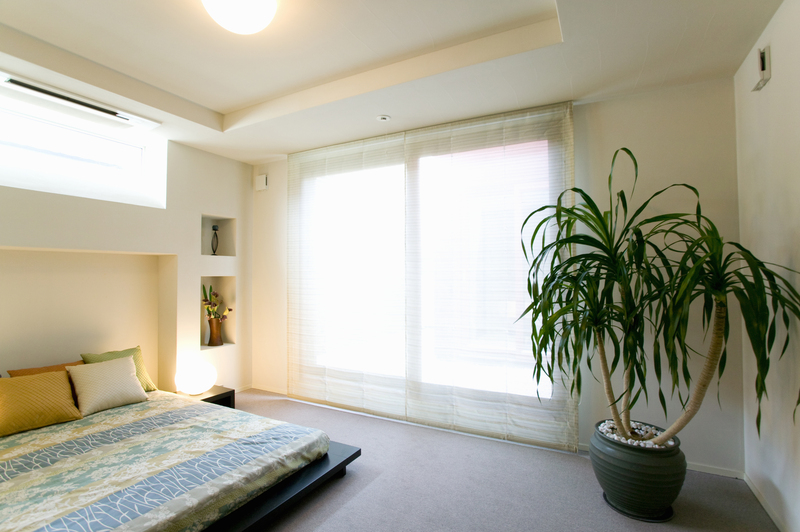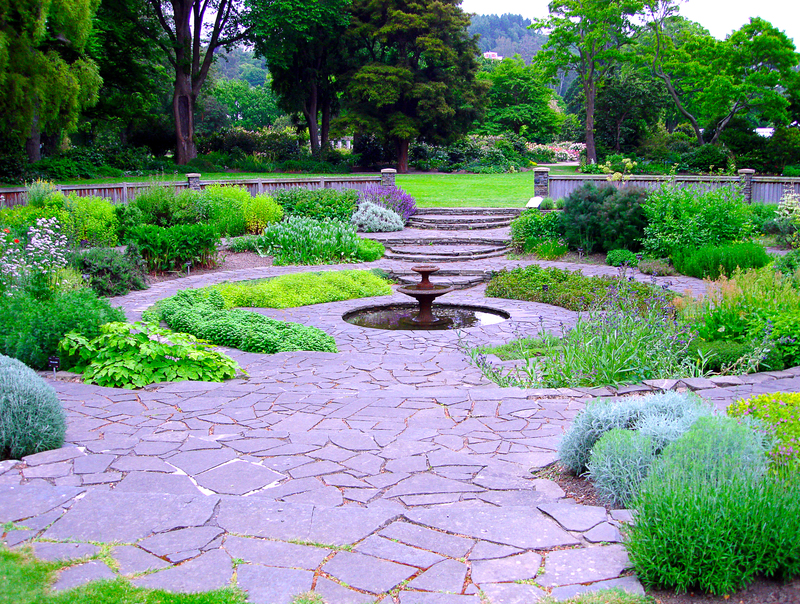Exploring the benefits of vertical gardening
Posted on 19/06/2025
Exploring the Benefits of Vertical Gardening: An In-Depth Guide
Urban living spaces are shrinking, but our love for lush green environments continues to grow. Enter vertical gardening--a remarkable gardening technique that maximizes limited space while offering both aesthetic and environmental advantages. In this article, we'll explore the benefits of vertical gardening, uncover practical applications, and provide all the information you need to start your own vertical garden.

What is Vertical Gardening?
Vertical gardening refers to the practice of cultivating plants on vertically suspended panels, trellises, stacked planters, or wall-mounted structures. This innovative gardening approach allows green enthusiasts with minimal horizontal space--like apartment dwellers or office workers--to grow flowers, herbs, and vegetables upward rather than outward.
Different Vertical Gardening Methods
- Living walls or green walls: These are professionally engineered panels attached to existing walls, often seen in public and commercial spaces.
- Pocket planters: Fabric or plastic planters with pockets for individual plants.
- Trellises and lattices: Perfect for climbing plants such as tomatoes, peas, or ivy.
- Stackable containers: Modular containers stacked vertically for small balconies or patios.
Whether you use simple DIY planters or high-tech hydroponic systems, the advantages of vertical gardening are clear.
Key Benefits of Vertical Gardening
1. Maximizing Space Efficiency
One of the main benefits of vertical gardens is the efficient use of space. By growing upwards, you can transform even the smallest areas--balconies, patios, or interior walls--into lush, productive gardens.
- Ideal for apartment dwellers with limited floor space
- Makes urban gardening possible indoors or outdoors
- Enables gardening in environments where traditional plots won't fit
2. Improving Air Quality and Reducing Pollution
Indoor vertical gardens act as natural air filters by absorbing pollutants and releasing oxygen. Plants placed vertically can remove toxins such as formaldehyde, benzene, and carbon dioxide from indoor spaces.
- Improves indoor air quality naturally
- Reduces ambient dust levels and increases humidity
- Contributes to better respiratory health and well-being
3. Enhancing Aesthetics and Wellbeing
Vertical green walls are visually stunning and can transform bland spaces into vibrant focal points. Numerous studies show that being around greenery helps reduce stress, boost mood, and improve creativity and productivity.
- Brings natural beauty into homes, offices, or public areas
- Creates soothing environments that foster relaxation
- Can be used as living privacy screens or unique design elements
4. Increasing Crop Yield for Small Spaces
If you dream of harvesting fresh produce but lack garden beds, the vertical gardening technique allows high-density planting. You can cultivate a surprisingly diverse range of edibles--lettuce, strawberries, peppers, herbs, and more--in confined quarters.
- Enables higher yields per square foot vs. traditional gardening
- Reduces competition for soil nutrients and sunlight
- Facilitates easier access to plants for harvesting and maintenance
5. Efficient Use of Water and Resources
Vertical gardens are engineered to minimize water usage through targeted irrigation systems. Many setups use drip irrigation, which delivers water directly to plant roots, reducing waste and promoting healthier growth.
- Reduces water runoff and evaporation
- Promotes responsible resource consumption
- Ideal for drought-prone or water-conserving areas
6. Natural Pest and Disease Control
Growing plants off the ground can help mitigate pest infestations and soil-borne diseases. Vertical gardening often means better airflow and sunlight penetration, discouraging mold, mildew, or rot.
- Elevated planting keeps many pests at bay
- Resulting crops tend to need fewer pesticides or chemicals
- Promotes greater plant health and vigor
7. Insulation and Energy Efficiency
Installing vertical gardens on building exteriors can act as a natural insulator, buffering temperature changes and reducing energy costs.
- Lowers indoor temperatures in summer and retains warmth in winter
- Decreases reliance on heating and cooling appliances
- Supports green building initiatives and sustainable urban planning
Popular Plants for Vertical Gardening
Choosing the right plants is essential for successful vertical gardens. While most flowers, herbs, and edibles can be adapted to vertical growth, some stand out for their resilience and adaptability.
- Lettuce, spinach, and leafy greens
- Strawberries and small-fruit varieties
- Herbs: basil, mint, parsley, oregano, thyme
- Ornamental vines: pothos, philodendrons, ivy, ferns
- Climbing vegetables: beans, peas, tomatoes, cucumbers
- Succulents and cacti for low-maintenance greenery
Tips for Plant Selection
- Choose plants that suit your light and climate conditions
- Mix edible and ornamental species for both function and appearance
- Opt for shallow-rooted species when using smaller containers
- Consider drought-tolerant or native plants for less maintenance
How to Start Your Own Vertical Garden
Step-by-Step Guide
- Identify your space: Select a sunny wall, balcony railing, or indoor area with adequate light.
- Choose your framework: Options range from prefab vertical planters to custom DIY shelves or wall grids.
- Select suitable plants: Consider factors like light, temperature, and plant size.
- Prepare your planting medium: Use high-quality, lightweight potting mix; consider soil amendments for vertical setups.
- Install irrigation: Automatic drip or wick systems make watering easier and more uniform.
- Arrange plants: Group similar species together for visual harmony and consistent care.
- Maintain regularly: Fertilize, prune, and check for pests or disease.
Do-It-Yourself Vertical Garden Ideas
- Pallet wall gardens--Upcycle old pallets with landscape fabric to create rustic vertical planters
- Shoe organizer hanging gardens--Repurpose clean fabric shoe organizers for herbs and lettuce
- Gutter gardens--Mount recycled gutters on a fence to create easy-to-access rows for greens
- Stacked pots and tower gardens--Arrange pots in a stacked system for patios and small spaces
Vertical Gardening for Urban Sustainability
Urban vertical gardens play a critical role in sustainable city design. Not only do these gardens reintroduce greenery into concrete heavy environments, but they also:
- Mitigate the urban heat island effect by cooling urban areas naturally
- Reduce stormwater runoff and improve drainage through natural absorption
- Encourage pollinator populations by providing habitats for bees, butterflies, and birds
- Support local food production by enabling residents to grow edibles onsite
Green infrastructure strategies increasingly include vertical gardens as an important tool for resilient urban design.
Vertical Gardening Maintenance Tips
- Water efficiently--Check soil moisture regularly, and adjust irrigation as seasons change.
- Fertilize wisely--Use slow-release fertilizers or liquid feeds suited to your plant types.
- Prune and harvest--Keep growth under control and remove faded foliage promptly.
- Inspect for pests--Look for signs of infestation and act early to prevent spread.
- Replant as needed--Replace annuals or underperforming plants to keep your garden thriving all year long.

Common Questions About Vertical Gardening
Is vertical gardening expensive?
Vertical garden costs can range widely. DIY solutions often use recycled materials and are budget-friendly, while commercial green walls may require greater investment. However, over time, savings on produce, cooling, and improved well-being often outweigh initial expenses.
What are the challenges of vertical gardening?
- Ensuring even watering
- Supporting heavier plant varieties
- Monitoring for pests or diseases that may spread quickly in close quarters
- Choosing the right plants for light and environment
With careful planning and regular maintenance, most of these challenges are easy to overcome.
Where can you install a vertical garden?
- Indoors--on kitchen, living room, or office walls
- Balconies and patios
- Building exteriors and courtyards
- Fences and garden sheds
- Schoolyards and community spaces
Conclusion: Transform Your Space With Vertical Gardening
Exploring the benefits of vertical gardening reveals that this innovative approach is more than just a gardening trend--it's a smart, sustainable way to make the most of any space. From improving air quality and enhancing aesthetics to increasing food production and supporting city sustainability, vertical gardening offers a treasure trove of advantages for gardeners of all levels.
If you are seeking to maximize your green footprint and transform your living space, consider starting your own vertical garden. With thoughtful planning and a little creativity, any wall, fence, or balcony can burst into life and color--one vertical step at a time.

